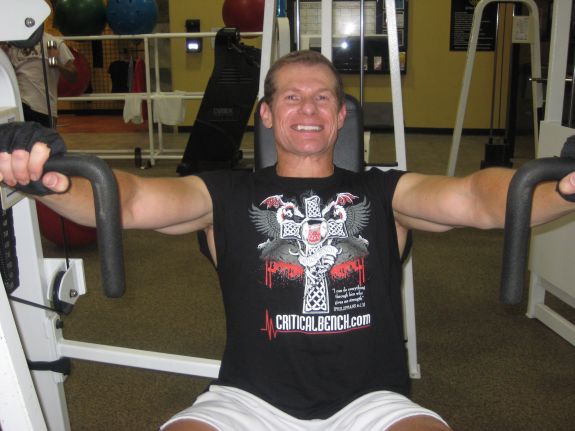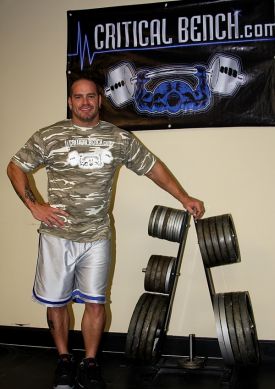The Best Way to Prepare for an Endurance Event
by Shin Ohtake creator of Max Workouts

If your training for an upcoming 10 km and you've been told that you need to run, run and run some more for those distances or longer to build up your endurance...you've been told wrong. Training for a 10 km or even a longer endurance event isn't about just doing that activity for long periods of time. It's easy to think that way and it seems like the right thing to do, but what you don't know may actually be hindering you from getting better faster. There's nothing worse than putting in hours of hard work and not seeing the results you expected. If you want your results to reflect all the hard training you put in, than you better start training right. I'll show you the most common mistakes people make when training for these events and simple but effective training methods that you can easily implement into your training regimen to help you improve your performance.
First of all let me just start out by stating that this is NOT for the elite endurance athletes. If you're an elite level triathlete, marathoner or any other endurance athlete, this article will not apply. Elite athletes are at a different level, when it comes to training and each of their training regimen is customized to fit their needs.
However, if you're a weekend warrior participating in endurance events for the enjoyment and challenge of it, as well as to improve you're fitness level...read on because what I have to say may open your eyes about endurance training.
Usually when you have a goal of participating in an endurance event...let's say a triathlon. You'll most likely try to swim, bike and run as much as possible to build up your endurance...right? And although building up endurance plays a large part in improving your fitness level, most people don't know that their power level plays an even larger role. Power is a term often times associated with explosive sports like football, basketball and hockey, but power is a vital component of fitness for almost all sporting events including endurance events. 
Power is essentially your work capacity, or put a another way, your ability to perform work. So, the more work you can do in a shorter amount of time the more powerful you are. A good analogy is comparing motor vehicles with different engine sizes. For instance, a truck with a V8 engine is more powerful than a car with a 4 cylinder engine and so the truck can haul heavier objects more quickly and get more done in a shorter amount of time than the car, which is limited to only being able to carry small objects.
So as an endurance athlete, your goal is to be able to cover certain (long) distances in the shortest amount of time. Now this is where the power comes...how long are you able to to sustain a certain speed before you burn out. The more powerful of an athlete you are the more likely that you'll be able to sustain a faster pace. This is the difference between endurance and power. If you have lots of endurance, you'll be able to run or bike (or whatever your choice of event may be) for a long time, but you won't be able shift gears to go faster, you'll only be able to sustain a certain pace (usually pretty slow but steady) for very long periods of time.
So the ultimate goal is to have a both power and endurance. But for the average joe that's participating in seasonal weekend type of endurance events, you'll get more bang for your buck by training for power more than endurance. Of course you have to put in some long easy to moderate training sessions to help build your endurance. But if you're a working professional with a job and other commitments, time is limited and realistically one or two long training sessions a week should suffice. The rest of time should be spent on increasing your power levels.
So the next obvious question is...how do you increase power?
The best and most efficient way to increase your power level is....interval training! Not only does interval training help you burn fat, but it also helps you increase your power, which in turn makes you more fit and better suited to perform all sorts of sporting activities...including endurance events.
There are many different types of interval training which vary in intensity, distance and time. But the one common key to all interval training is intensity. Your goal in interval training is to train at a certain intensity for a given workout session. That's essentially why the rest intervals are there to begin with. The rest allows you to catch your breath and get a temporary recovery break, so you can sustain the same intensity. By repeating it over and over, you're enabling your body to train at a higher intensity, thereby improving your body's ability to perform more work - which is power.
Another important point to keep in mind is that power is directly associate with strength as well. People often neglect the strength component when training for an endurance event. Too many people associate strength training with body building and getting big and bulk. But the truth of the matter is doing the right types of strength training will get you stronger, leaner and more powerful. The best way to improve your strength to increase your power is by performing a series of functional exercises using challenging weights in a heart pumping circuit training format. This type of training will force your body to produce hormones that'll enhance your strength and burn fat while increasing your ability to do more work.
Here are some sample workout schedules divided up by distances.
Functional Strength Training - FST
Moderate Intensity Interval Training (70- 85% max effort) - MIT
High Intensity Interval training (85 - 100% max effort) - HIT
Long Distance Training (55 - 70% max effort) - LDT
FST (am) / MIT (pm) - Spilt Days: FST in the morning and MIT in the afternoon
Shorter Distance Events: (ie. 10 km)
Mon:FST Tues:HIT Wed:HIT Thurs:FST Fri:HIT Sat:LDT Sun: Rest
Medium Distance Events: (ie. Half Marathons)
Mon:FST Tues:HIT Wed:LDT Thurs:FST (am) / MIT (pm) Fri:HIT Sat:LDT Sun: Rest
Long Distance Events: (ie. Marathons)
Mon:FST (am) / MIT (pm) Tues:LDT Wed:HIT Thurs:FST (am) / MIT (pm) Fri:HIT Sat:LDT Sun: Rest
As the distance of your endurance event increases so does your training volume. The split workout days are more for advanced level training, but it is recommended for those participating in longer endurance events. The schedules can be changed up to fit your needs but in general try and include 1 -2 functional strength circuit training sessions a week (30 - 45 minutes a session), 3 - 4 interval training sessions a week (45 - 60 minutes a session @ moderate to high intensity) and 1 - 2 long endurance training sessions a week (2 - 4 hours of easy - moderate effort) for a well rounded and effective training routine for your upcoming endurance events.
If the information seems a bit overwhelming, or you aren't quite sure of where to begin, you can check out my fitness program Maxworkouts. It's a comprehensive program that has everything I talked about in this article. The entire program is based on increasing your power which in turn will make you lean, fit and strong. The workouts are divided up into strength circuit training and interval cardio training sessions all programmed and scheduled for you so you don't have to think about a thing. All you have to do is follow the program.
Shin Ohtake is the author of the world-famous fitness program, MAX Workouts. To learn more about how you can get ultra lean and toned with shorter workouts, visit http://www.MaxWorkouts.com
More Articles By Shin Ohtake
Return to the Workout Articles Archive
|